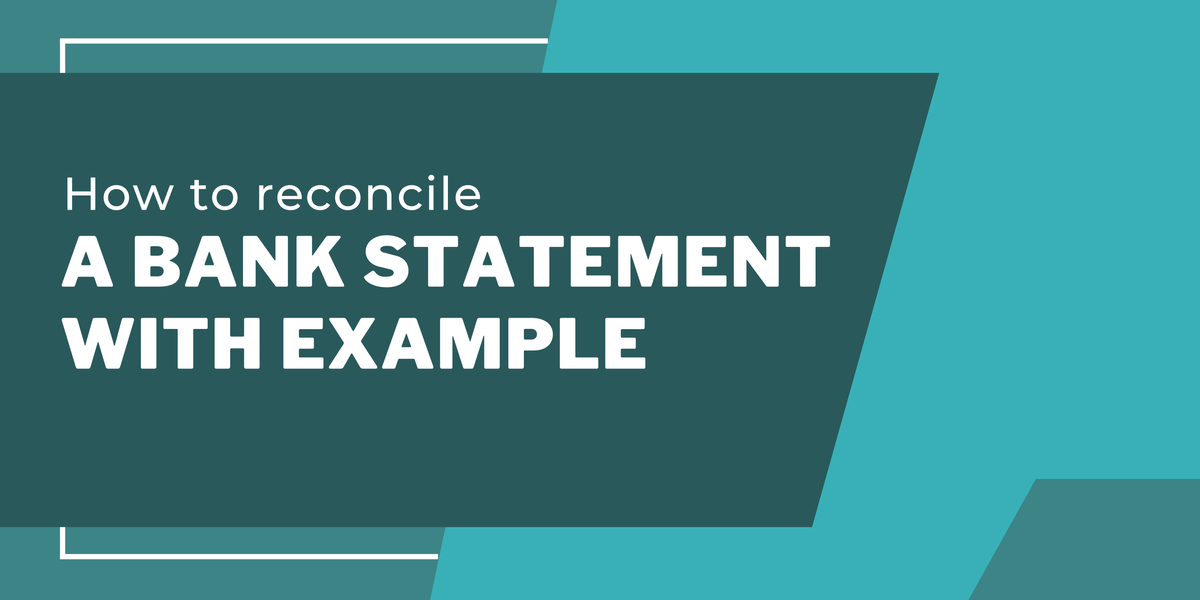For small business owners, keeping financial records in order is non-negotiable.
Bank reconciliation is a key process that ensures accuracy, prevents fraud, and supports better cash flow management. It’s not just about balancing numbers; it’s about gaining control and clarity over your finances.
This guide is here to help. We’ll explain what bank reconciliation means, walk you through the steps, provide a real-world example, and highlight why making it a regular practice is essential.
What Is A Bank Reconciliation Statement?
A bank reconciliation statement is like a financial checkup for a company. It looks at how much money the company thinks it has in the bank (according to its records) and compares that with what the bank says.
The main job is to find and fix any mistakes or differences between the two. This statement is important because it ensures that the company's money records are correct and match what the bank says.
Why Bank Reconciliation Matters?
A bank reconciliation statement is a financial tool used to compare a company’s internal accounting records with its bank statement for a specific period.
Bank reconciliation is important as its primary purpose is to identify and resolve discrepancies between the two, ensuring that every transaction is accounted for accurately.
This process is essential for maintaining accurate financial reporting. By reconciling, businesses can detect errors, such as missed transactions or incorrect amounts, and address them promptly.
Additionally, it plays a crucial role in preserving business integrity by reducing the risk of fraud or financial mismanagement.
Steps for Effective Bank Reconciliation
Reconciling a bank statement might seem daunting, but breaking it into simple steps makes the process manageable and efficient. Here's a step-by-step guide:
- Acquire Bank Records: Start by obtaining your bank records. This can be a physical bank statement, a digital copy, or an online banking transaction list.
- Collect Business Records: Gather your internal financial records, such as ledgers, journals, or accounting software reports, to compare against the bank statement.
- Identify a Starting Point: Use the last reconciled balance as your starting point. This ensures continuity and helps pinpoint discrepancies from the correct baseline.
- Review Bank Transactions: Go through the bank statement, verifying that all deposits, withdrawals, and transfers align with your internal records.
- Verify Book Entries: Cross-check each transaction in your financial records against the bank statement. Look for missed transactions, duplicate entries, or amounts that don’t match.
- Correct Discrepancies: Adjust for items that might cause mismatches, such as:
- Outstanding checks: Payments issued but not yet cleared by the bank.
- Bank fees: Charges for services or penalties recorded by the bank but not yet in your books.
- Errors: Mistakes in either your records or the bank’s records.
- Update Cash Balance: Make adjustments in your financial records to reflect the corrected balance. This includes accounting for any discrepancies resolved in the previous step.
- Compare Final Balances: Ensure the adjusted balance in your books matches the final balance in the bank statement. If they align, the reconciliation is complete; if not, recheck for missed items.
Bank Reconciliation Example
Let’s walk through a detailed example of bank reconciliation to illustrate the process:
need
A business begins with a bank balance of $10,000. During the period:
- It writes checks totaling $5,000.
- It deposits an additional $2,000.
At the end of the period:
- The book balance (internal records) shows $7,000.
- The bank statement balance shows $5,975.
There’s a discrepancy between the two balances that need to be resolved.
Identifying and Adjusting Discrepancies
Here are the adjustments needed to reconcile the accounts:
- Unprocessed Deposit:
- The $2,000 deposit has not yet cleared the bank.
- This amount needs to be added to the bank balance.
- Bank Service Fee:
- A $25 service fee was charged by the bank but not recorded in the books.
- This amount must be subtracted from the book balance.
- Uncashed Check:
- A $1,000 check issued by the business has not yet been cashed.
- This amount should be subtracted from the bank balance.
After adjustments:
- Bank balance: Starting bank balance: $5,975
- Unprocessed deposit: $2,000
- Uncashed check: $1,000Reconciled bank balance: $6,975
- Book balance: Starting book balance: $7,000
- Bank service fee: $25Reconciled book balance: $6,975
The final balances now align at $6,975, completing the reconciliation process.
Why Bank Reconciliation Matters
Bank reconciliation is more than just a routine task—it’s a cornerstone of sound financial management. Here’s why it’s crucial for any business:
1. Maintaining Precise Financial Records: Reconciling ensures your financial records align with actual bank activity. Accurate records help you make informed decisions and avoid costly mistakes.
2. Detecting Errors, Fraud, or Unusual Transactions Early: Discrepancies such as unauthorized transactions, bank errors, or double charges can impact your business if left unchecked. Regular reconciliation allows you to identify and address these issues before they escalate.
3. Preventing Overdraft Fees and Ensuring Cash Flow Efficiency: By tracking cleared and pending transactions, reconciliation helps you avoid overdrawing your account. It also ensures that you maintain a healthy cash flow to cover expenses and seize growth opportunities.
4. Simplifying Tax Preparation and Enhancing Audit Readiness: Accurate and organized records save time during tax preparation and reduce stress during audits. Reconciling regularly demonstrates that your business operates with transparency and financial discipline.
5. Adjusting Reconciliation Frequency to Fit Your Business: The ideal frequency for reconciliation depends on your business size and transaction volume:
- Daily for large businesses with high transaction activity.
- Monthly for smaller businesses with fewer transactions
Benefits of Regular Bank Reconciliation
Regular bank reconciliation offers a wide range of advantages that directly contribute to the financial health and stability of your business. Here are the key benefits:
1. Identifies Theft or Fraudulent Activities
Reconciling your accounts regularly helps detect unauthorized transactions or signs of fraud early, protecting your business from potential financial losses.
2. Tracks Bank Fees, Penalties, and Transactions
Regular reviews ensure you’re aware of all fees and charges applied by your bank, helping you avoid surprises and better manage costs.
3. Ensures Accurate Accounts Receivable and Payable
Reconciliation ensures that customer payments are accurately recorded and outstanding bills are properly tracked, maintaining smooth business operations.
4. Flags Missed or Duplicate Payments
It’s easy to overlook or accidentally duplicate transactions, especially in busy operations. Regular reconciliation helps identify and correct these errors, preserving cash flow.
5. Facilitates Better Planning and Budgeting
With accurate financial data, you gain insights into spending patterns, allowing for more informed decision-making and sustainable growth strategies.
Conclusion
Bank reconciliation is a critical process for maintaining accurate financial records, detecting issues early, and managing cash flow effectively. By reconciling regularly, businesses can prevent errors, reduce risks, and stay prepared for taxes or audits.
With the steps and insights shared in this guide, you can make bank reconciliation a simple yet powerful part of your financial management routine. Start now to ensure clarity and control over your finances.
FAQs
1. How long does it take to reconcile a bank statement?
The time required depends on the number of transactions and the complexity of your accounts. For small businesses with fewer transactions, it may take 15–30 minutes per month. Larger businesses with extensive activity may need more time or automated software for daily reconciliation.
2. Can bank reconciliation be automated?
Yes, many accounting software programs offer bank reconciliation features. These tools link directly to your bank accounts, match transactions automatically, and highlight discrepancies, significantly reducing manual effort.
3. What should I do if I can’t resolve discrepancies?
If discrepancies remain after careful review, check for common issues like duplicate entries, missing receipts, or misclassified transactions. If the issue persists, consult with your bank or a financial professional to identify and resolve the problem.



Member discussion: